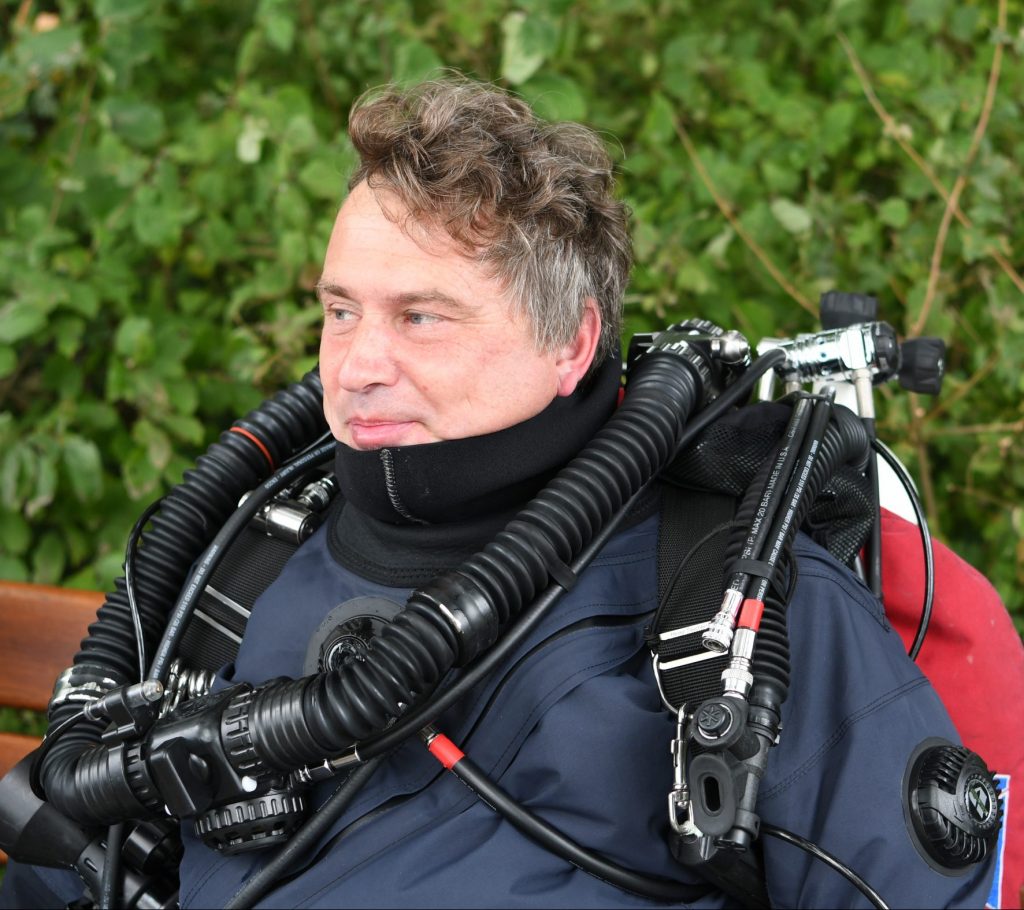Dr. Steffen Scholz is a Mechanical Engineer. He obtained his Diploma in Mechanical Engineering from RWTH University in Aachen and was awarded a PhD in Mechanical and Manufacturing Engineering from Cardiff University. He holds an honorary Professorship at Swansea University in the field of Smart and Advanced Manufacturing, He is an Adjunct / Visiting Professor at Vellore Institute of Technology (VIT) in India. Steffen works as a senior research manager in the area of Industry 4.0 applications at Karlsruhe Institute of Technology (KIT). His team focuses on the development of multi-material high-resolution 3D Inkjet technology.
Steffen started his diving career in 1976 and was always very enthusiastic about wreck diving and archeological diving projects. Over the years he conducted over 50 projects for magazines like GEO or National Geographic in the area of scientific diving. His team are capable of making dives to 120 meters depth and occasionally beyond. They dive to explore caves and perform scientific missions. He became a diving instructor in 1989, an instructor evaluator in 1991, He started technical diving in 1990 and as an engineer he was involved in a number of R&D projects related to dive computers, decompression algorithms, rebreathers and diving protocols related to rebreather and open circuit diving. He published a number of books and articles related to diving procedures and protocols. Steffen is a trained and skilled scientific diver.
Steffen served in the following positions in his career related to diving:
- Member of the German Standardization working group DIN: diving and diving equipment
- Advisory boards of national and international projects
- Board of Directors German Diving Federation (International Affairs)
- Chairman of Nitrox and Technical Diving Committee in VDST
- President and Master Trainer of Rebreather Advisory Board
- President of European Underwater Federation (EUF)
- Member of the ISO Working group TC 228 WG1 “Diving and diving related services”
- Advisory Board of the international research project “ScienceDiver “funded by the European Commission
- Director in the Technical Committee of CMAS (Standardization)
- Technical and Lead Auditor for Diving services and Recreational Diving Training Systems
On top of that, Steffen still has a lot of motivation to initiate, conduct and participate in projects and complex diving operations.
How and why do you use checklists?
I fully believe in the usage of checklists and standardized protocols since I started conducting complex diving operations. This involves archeological surveys, deep wreck expeditions, complex cave operations and very often the involvement of rebreathers. I’m a strong believer in team diving, teamwork at surface and under water and the implementation of standardized procedures. Over the years I realized that it is more that beneficial, that everybody in the team is on the same protocol, this includes selection of equipment, choice of gases, communication protocols, emergency and safety drills, and skills. For us as rebreather divers this applies to bailout procedures as an important fact as well.
Hence checklists come into play, and I do not only believe in checklists, but I’m also a strong believer in multiple standardized checklists as well. If an international team comes together for a project is just amazing when everybody is trained to the same protocol and to the usage of the same checklists. It starts with the unit (CCR) preparation checklist, the onsite checklist, the predive checklist and the 5m check, so the complete pre-dive sequence is standardized and follows the same protocols and checklists. So even a team of divers that never dived together before can act as a team and conduct complex diving operations on the fly in a safe manner. This only works out due to standardized checklists.

